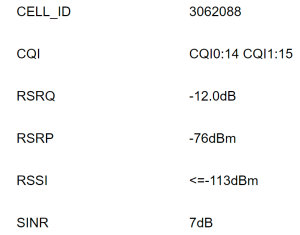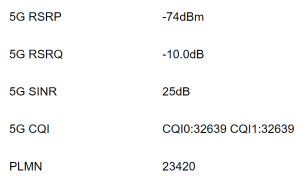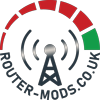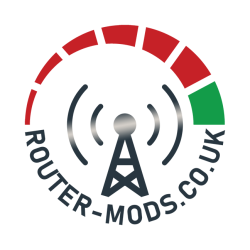Simple checklist:
- Find the nearest 4G mast (ensure its ENDC enabled if using 5G).
- Find the approximate location of the 5G mast (if using 5G).
- Decide what antennas to use.
- Decide where to externally install the antennas. Try and achieve line of sight to said masts, clearing neighbouring buildings and obstructions.
- Install the antennas (keep antenna cables as short as possible).
- Align the antennas (4G separately to 5G) according to the signal readings.
- Relax and enjoy.
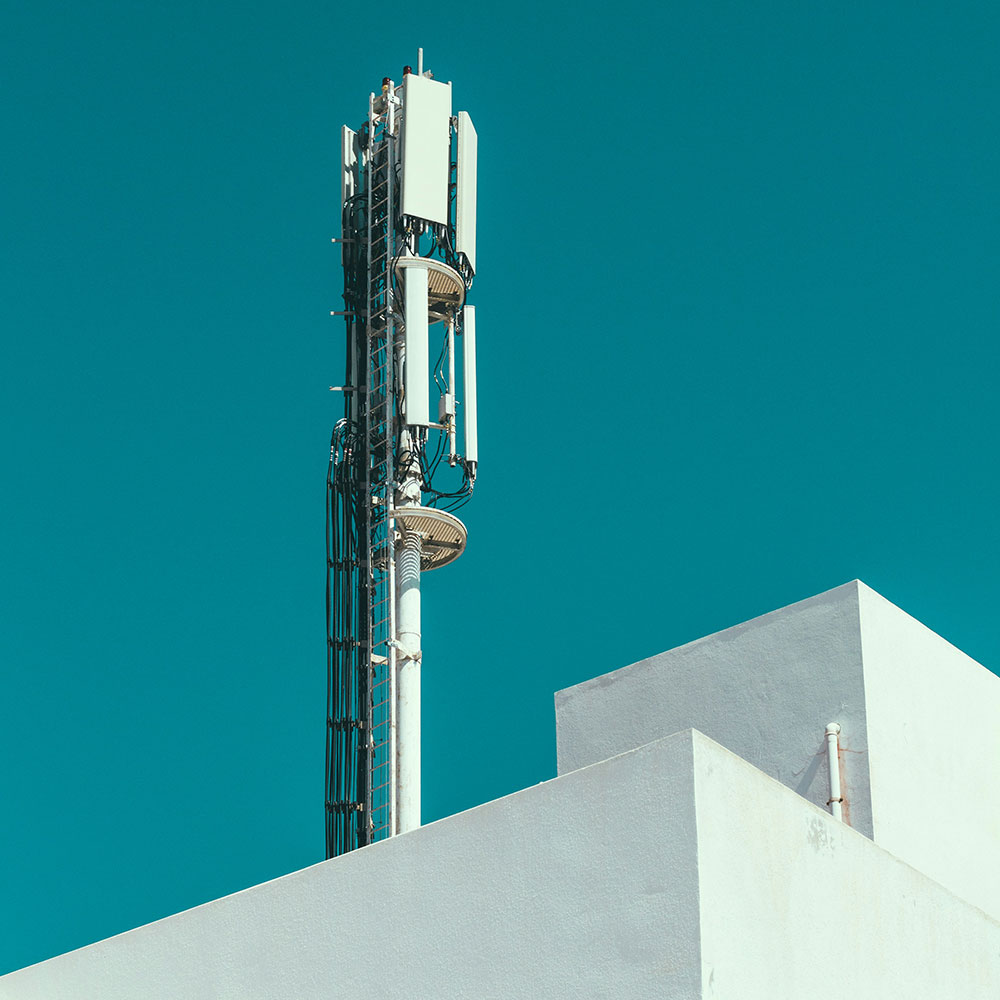
Finding Your Nearest Mast Location
What good is a modified router and external antennas if you don’t know where your nearest mast is or where to point the antennas?
Good job we have you covered.
4G Mast database websites:
These databases apply to 4G only.
If you are intending to use 5G, ensure check for the ENDC link (5G uplink) listed on the 4G mast.
UK – Cellmapper
Ireland – Comreg
Italy – LTEItaly
Switzerland – Map.GEO
Denmark – Mastedatabasen
If you know of any other country’s mast databases please do let us know so we can add to the list to assist other users.
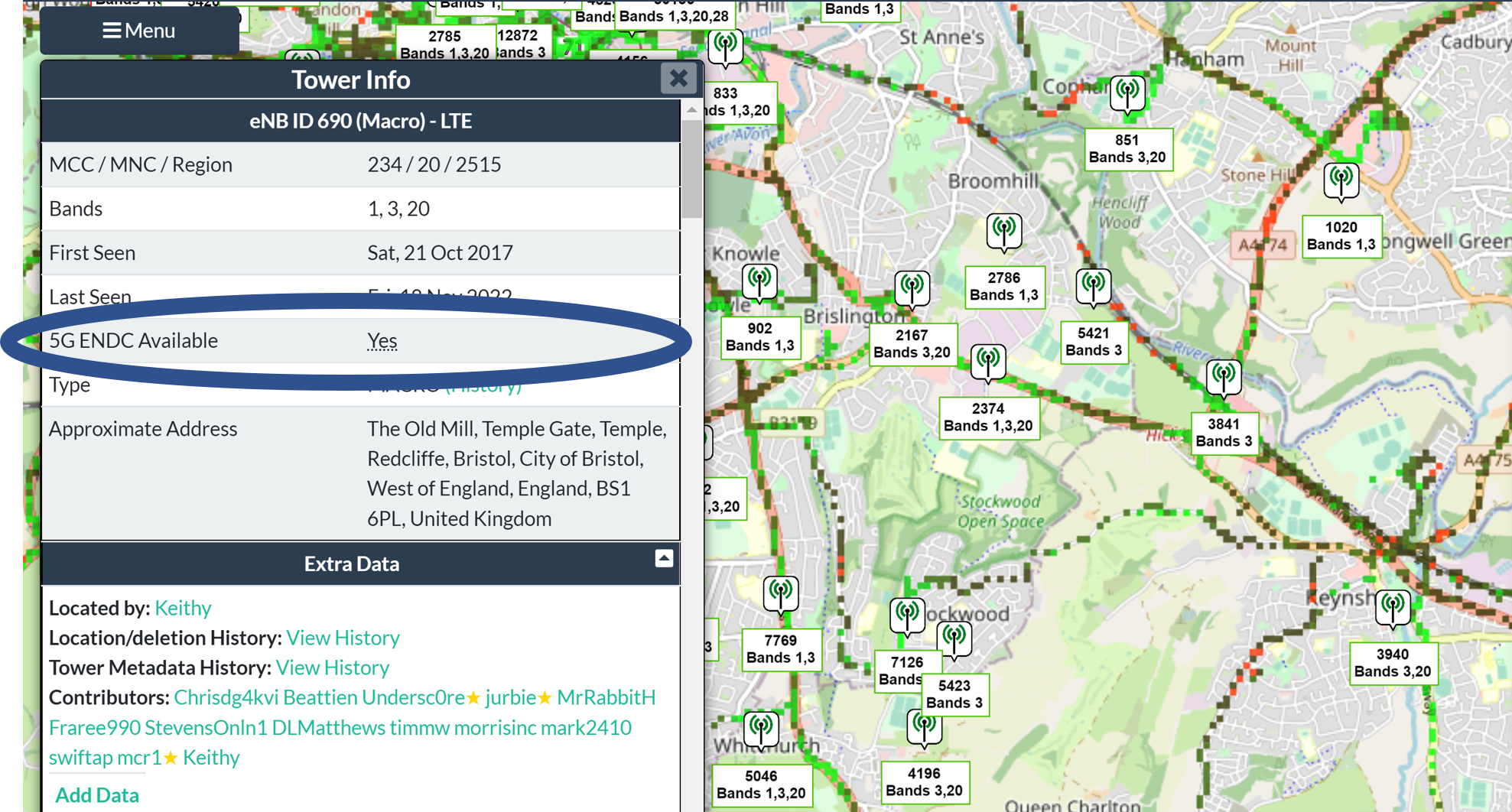
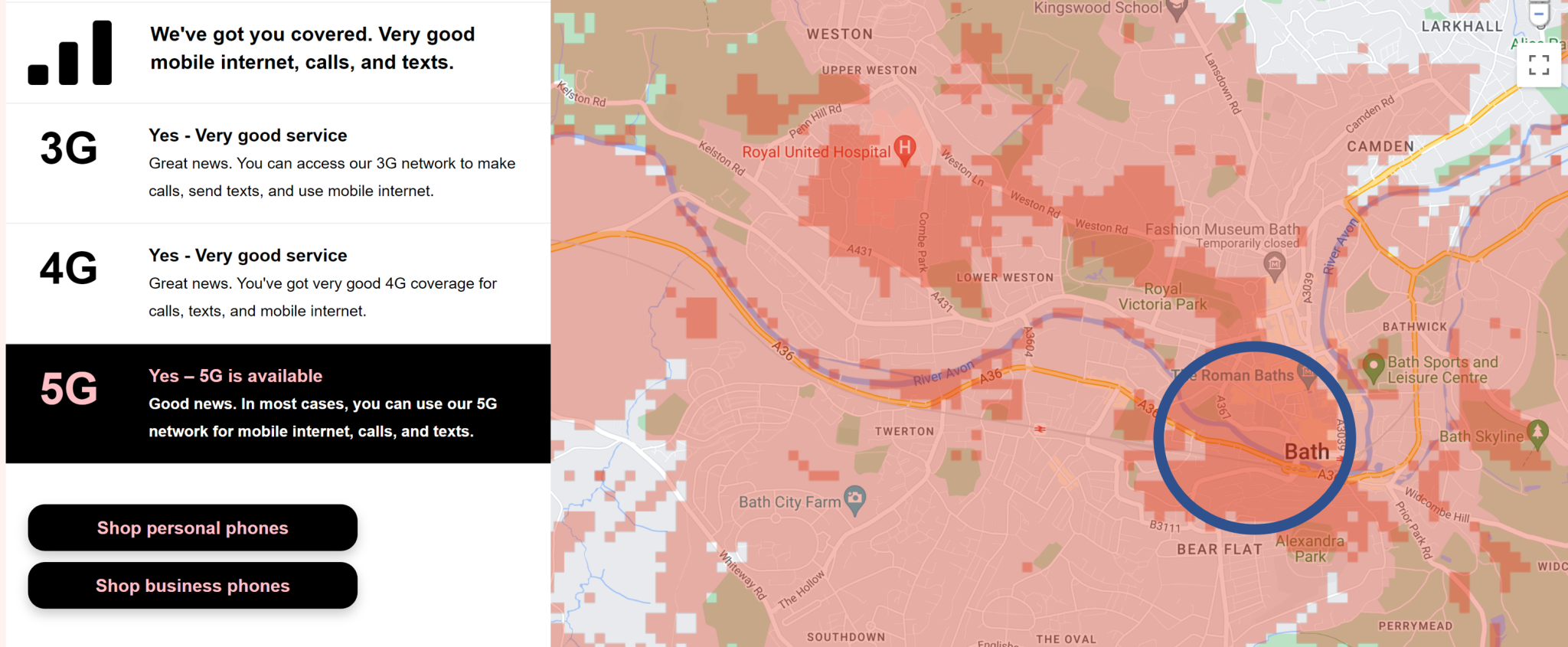
5G Mast
There is no official database for 5G masts (due to conspiracy theory’s and vandalism).
To get an indication of the 5G mast location, check your networks 5G coverage checker and look for the darker coloured radius. this is where the 5G cell is likely to be located.
Two Types Of 5G Connectivity?
5G NSA relies upon a 4G connection to establish a link to 5G. Therefore 5G cell can be a different location to your 4G mast. Ensure to identify your 4G and 5G masts separately, then position your antennas accordingly. Use a separate antenna for both 5G and 4G. At present there isn’t any 5G SA masts installed in the UK and therefore you will be using 5G NSA.
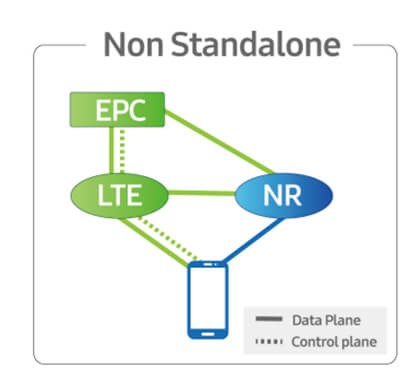
5G NSA
When it comes to NSA 5G, the clue is in the name: It is 5G that can not stand on its own in terms of infrastructure. NSA is a 5G radio access network (RAN) that operates on a legacy 4G LTE core — known as Evolved Packet Core (EPC) — and manages control plane functions. NSA includes both a 4G and 5G base station, but the 4G base station takes precedence. Because the NR control plane anchors to the EPC, radio frequency signals forward to the primary 4G base station.
NSA 5G, also known as Release 15 by 3GPP, is considered the first stage of 5G. Initial 5G deployments used NSA because MNOs could use their current infrastructure to build a 5G network. Carriers with 4G LTE networks could implement a 5G RAN on top of their existing architectures. NSA 5G can serve as a steppingstone for carriers unprepared to make a hefty investment when transitioning from legacy 4G LTE to 5G networks.
The drawback of NSA 5G, can not deliver certain capabilities that a pure, unfettered SA 5G network can. For example, NSA does not enable the low latency that is one of the biggest draws to 5G. Another disadvantage of NSA is it requires a higher level of energy to power 5G networks with 4G infrastructure. 5G NR is more energy-efficient than LTE, IEEE reported, but using two different forms of cellular technology massively increases power consumption in a network.
NSA 5G also should not be confused with dynamic spectrum sharing (DSS), another method of deploying 5G with 4G technology. While NSA creates a 5G network with 4G infrastructure using dual connectivity, DSS permits 4G LTE and 5G NR to coexist in the same frequency band. 5G networks have a variety of spectrum bands available for use, and DSS distributes spectrum between bands based on user demands.
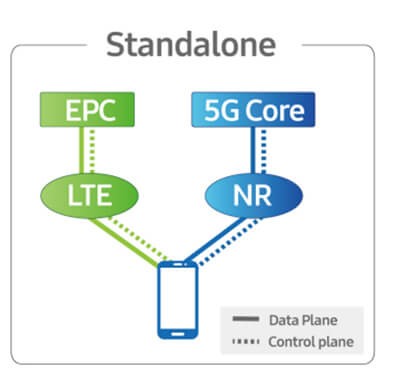
5G SA
SA 5G networks include both a 5G RAN and a cloud-native 5G core, something NSA networks lack and substitute with a 4G core. SA networks can perform essential 5G functions, such as reducing latency, improving network performance and centrally controlling network management functions, because of their 5G cores.
SA requires MNOs to configure a completely new architecture and learn how to manage it. As carriers waited for SA technology to mature, most opted to simply reconfigure their 4G networks to support 5G, as it was cheaper and more convenient.
New providers without established 4G core networks could not follow that strategy, though. Because they could not rely on a 4G core, they needed to build their 5G infrastructure from scratch. SA is now looking to take the crown among MNOs, as carriers start to deploy it to take advantage of the improvements it offers over NSA.
The biggest disadvantage of SA that it is costly to implement and time-consuming for network professionals to learn the new 5G core infrastructure. Regardless, MNOs are making the shift to SA because NSA can serve as a step toward 5G networking, but it is not considered true 5G due to its reliance on 4G LTE.
Choosing the right type of antennas
Why settle for less performance? We have tested many external antennas to achieve the best performance possible.
Choosing between a directional antenna or an omni for an LTE enabled router?
The choice of omni-directional and directional antenna is not always simple. We will try to explain the key differences experienced by using a uni-directional (aka ‘directional’) antenna vs. an omni-directional (aka ‘omni’) antenna.
The essence is that a directional antenna focuses its gain (reception) in one direction and reduces the gain (reception) in the other directions, much like a flash light does to a light bulb. The omni antenna provides similar reception in all directions (like a normal round light bulb). This can be both an advantage and disadvantage, for which a few points are listed for consideration.
Check out our antenna range in our shop now!

Omni-Directional Antennas
Benefits are that it can receive signal from virtually all directions. I.e. the mobile or LTE enabled router can roam across various cellular mobile base stations in any direction. If the one cellular base station (tower) is congested or faulty, then the possibility of receiving another site is better than when compared to a directional antenna. You will therefore have a better probability to maintain good connection stability in these situations.
A disadvantage is that you will also potentially receive interference from all directions, which could degrade your experience. So, the benefit above could also be a disadvantage in higher interference areas (interference is the reception of unwanted signals that can degrade your experience).
The overall gain of the omni antenna is lower, so the peak throughput is lower when generally compared to the directional antenna.
An omni antenna is easier to install than a directional antenna and it does not require realignment/adjustment when the network changes (new sites, network problems, etc.)
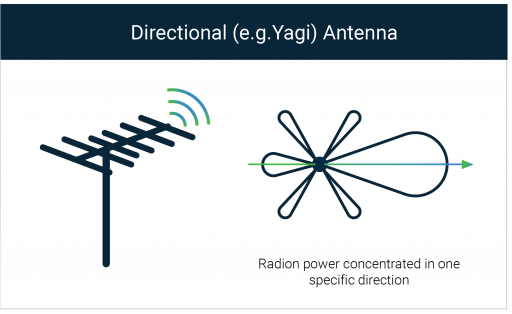
Directional
When you are far away from cellphone towers and only have marginal signal reception from a single site, then a directional antenna is often a better choice.
The benefit is that the signal from the target direction is improved through the directivity gain (like amplification). The gain from other directions is reduced as a result and hence the interference (unwanted signals) is suppressed. This can improve the Carrier to Interference Ratio (C/I) where a higher C/I is beneficial in cellular and other radio frequency (RF) systems reception. The signal reception stability is better for this reason, but only while the target base station (tower) is not congested nor faulty.
When the site to which you have directed the antenna starts performing poorly, you may need to re-align the antenna.
Implementation of the antenna may be more complicated as the antenna must be directed towards the target base station or transceiver. Selecting which site to direct the antenna towards is not always easy.
When the cellular base station (tower), which your antenna is directed towards, becomes congested or faulty, then the impact will become more severe when compared with an omni antenna. From a general stability perspective, the omni-directional antenna might be a better choice.
When the ability to receive a signal where there is virtually no signal, or an area with high interference, then a directional antenna can be considered.
Don’t be fooled by cheap priced or fake high gain antennas.
The antennas are the heart of the connection. The connection will only perform as good as the antennas connected to it. Poor antennas can result in connection instability, reduced reliability and poor performance.
Using a poor antenna would be like putting a Fiesta engine in a Ferrari!
There are many retailers online selling antennas that advertise unrealistically high dBi signal gains at cheap prices. When buying antennas ensure that they have the following:
Specification sheet?
Spec sheet show the VWSR test report?
Spec sheet show the dBi signal gain test across all frequencies?
Is the antenna certified with current regulations and OFCOM?
Are they a reputable manufacture?
Is there any verified reviews?
Offering unrealistically high signal gain vs similar products?
Buy cheap, buy twice!

Decide where to externally install the antennas

Now you know the masts locations, now you can plan where to physically install the antennas.
Remember the 5G & 4G masts maybe in separate locations.
- Try to obtain line of sight to the individual masts.
- Install the antennas as high as possible clearing nearby buildings and trees.
- Ensure sufficient movement for rotating the antennas left/right to align them.
- Do not install antennas in the attic.
Installing the antennas
Now its time to install the antennas.
Most antennas come with approximately 5M+/- of cable. Its best to keep the antenna cables as short as possible.
Longer the cable and higher the frequency the greater the signal loss will be.
You can extend the antenna cables, but ensure to use premium commercial grade cables (especially for 5G) to save on signal loss.
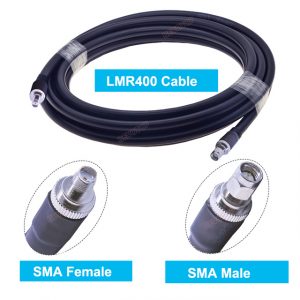
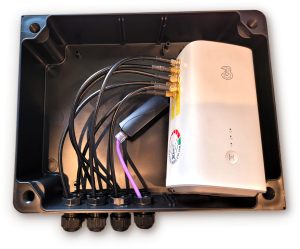
In most situations (although not ideal) installing the router in the attic, on the opposite side of the wall to the antennas is advised. This keeps the antenna cables as short as possible.
Depending on the attic environment, it might be worth considering installing the router within an IP rated enclosures to protect it from the elements.
How to power the router, if you do not have power in the attic?
Don’t worry we have you covered.
We have assembled kits for you with everything you need including variable cables length options, with or without IP enclosures to power your router.
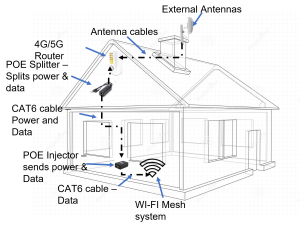
The final step, antenna alignment.
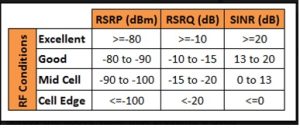
With everything installed, you can now fine tune the antennas alignment.
Remember to align the 4G and 5G antennas separately (if using 5G).
Use the image on the left for reference to achieve the best signal.
